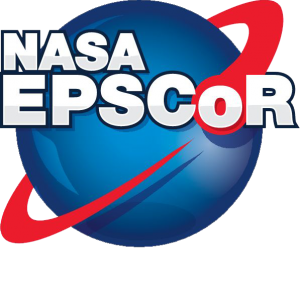Two NMSU Teams Funded by NASA EPSCoR Rapid Response Research Program

By Paulo Oemig, Director, NM NASA EPSCoR/NM Space Grant Consortium
NASA EPSCoR program provides seed funding to eligible institutions to enhance nationally-competitive capabilities in aerospace and aerospace-related research in EPSCoR states. NASA EPSCoR’s Rapid Response Research (R3) program competitively funds EPSCoR researchers with $100,000 for a period of one year to work alongside NASA and commercial partners on technical issues.
In this cycle two NMSU projects were selected for funding by the Rapid Response Research (R3). “Hack the Land out of Them: Obtaining Land Cover Classifications from GLOBE Observer Photographs,” is the title of the project led by Drs. Carol Campbell (Geography Department) and Parth Nagarkar (Computer Science Department). This project will utilize machine learning to characterize and label components of land cover photographs from the GLOBE land cover app. Among others, this effort will organize virtual learning workshops and bring together teams to understand the shared languages of photos, land interpretation and coding, and outline the approach to the hackathon. Recruitment will focus on participants from across the Southwest. Targeted recruiting of female and Hispanic participants from NMSU and the tribal colleges in New Mexico, in addition to programs associated with AmericaView will result in teams from locations across America.
The second project is led by Drs. Andreas Gross (Department of Mechanical and Aerospace) and Nancy Chanover (Department of Astronomy). Titled “Conceptual Design and Analysis of Aerobot for Long-Endurance Mission on Venus,” the project focuses on a conceptual design of a hybrid flight vehicle for a mission on Venus. The harsh atmospheric conditions of the planet represent a challenge, but its varied densities are an opportunity for a hybrid vehicle. The aerobot concept will manipulate different buoyancies and aerodynamic forces for navigation across horizontal and vertical layers while optimizing power requirements and allowing for fail-safe operation. The vehicle will fly above the clouds, where the sulphuric acid content is lower and the direct and reflected solar irradiance can be tapped to recharge batteries, as well as inside and below the clouds. The vertical mobility will be achieved by adjusting the vehicle’s buoyancy. The project will support two graduate students and strengthen aerospace and space exploration research in New Mexico.
